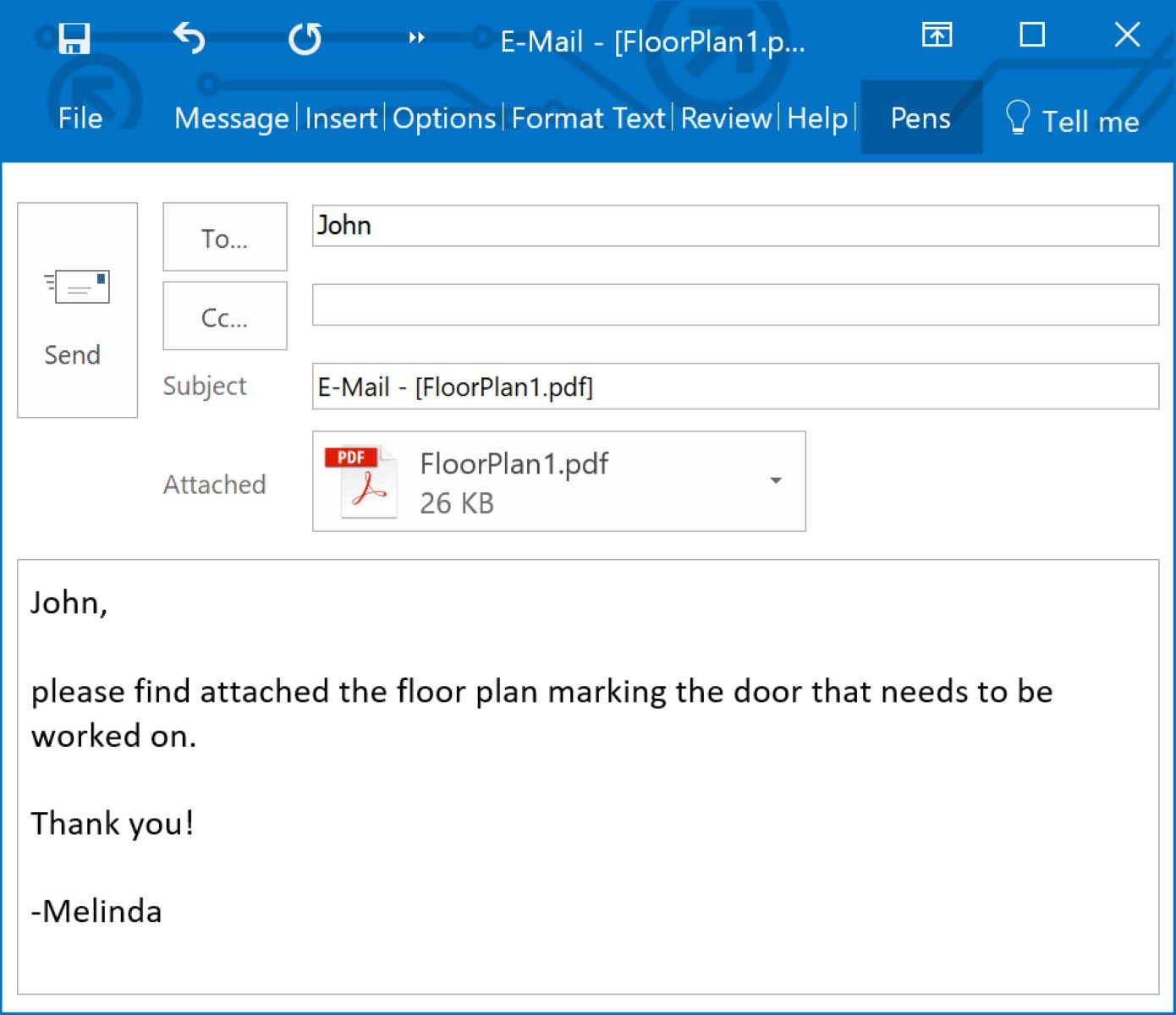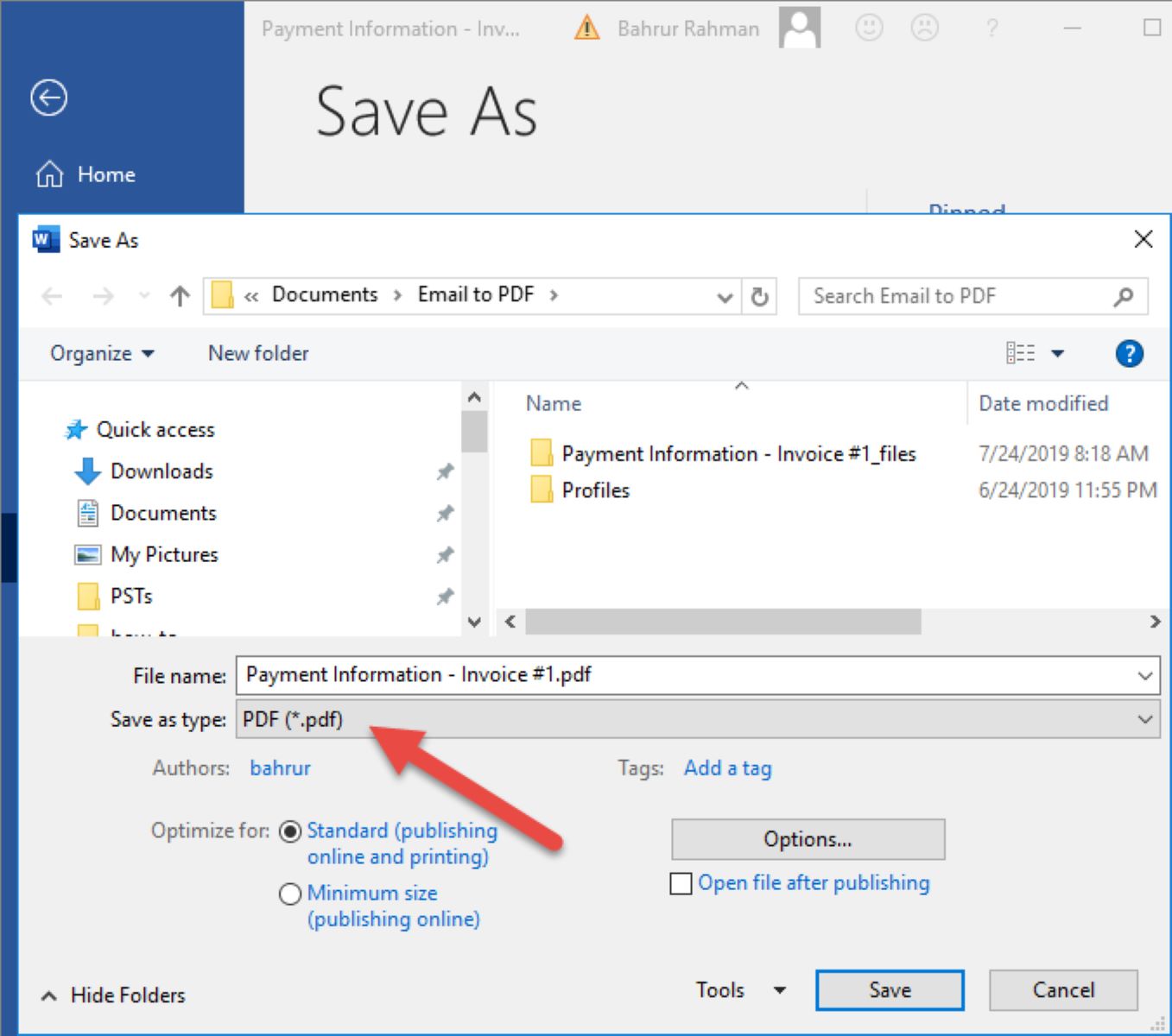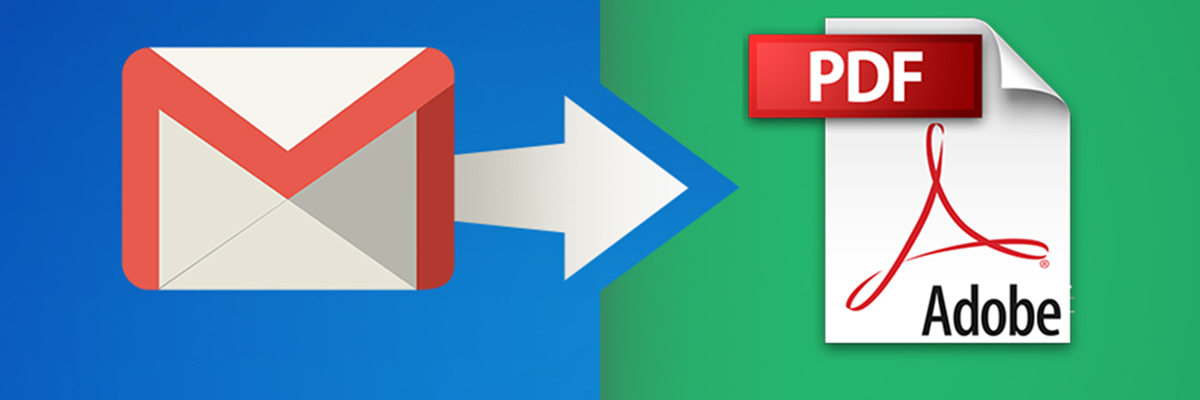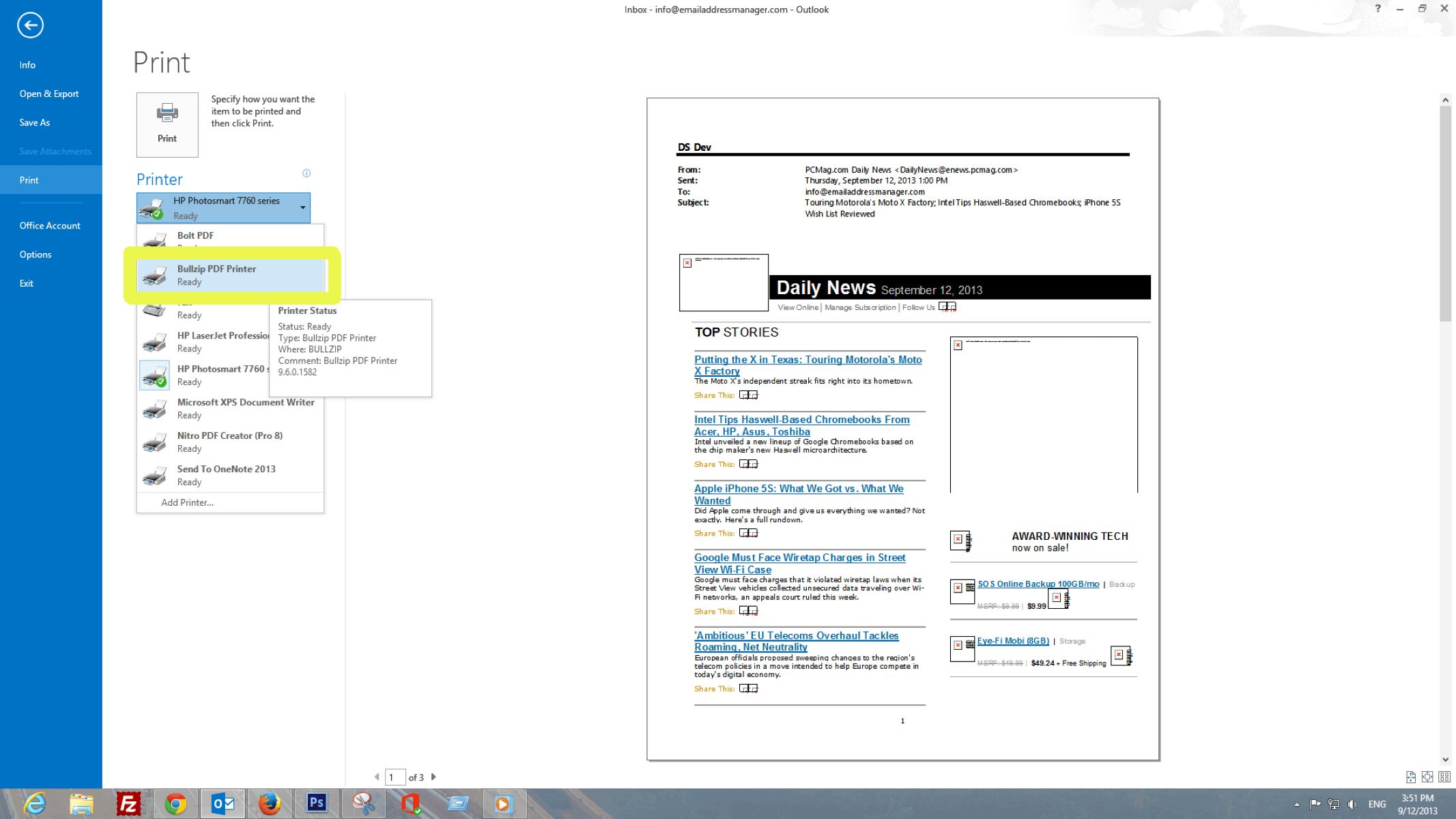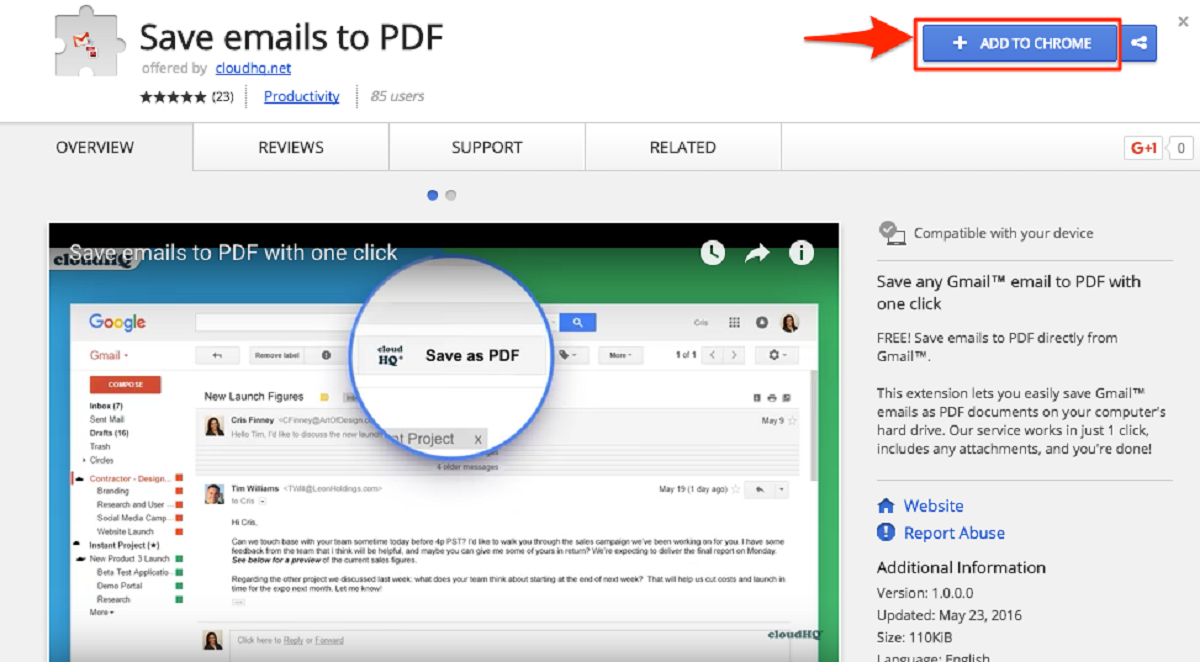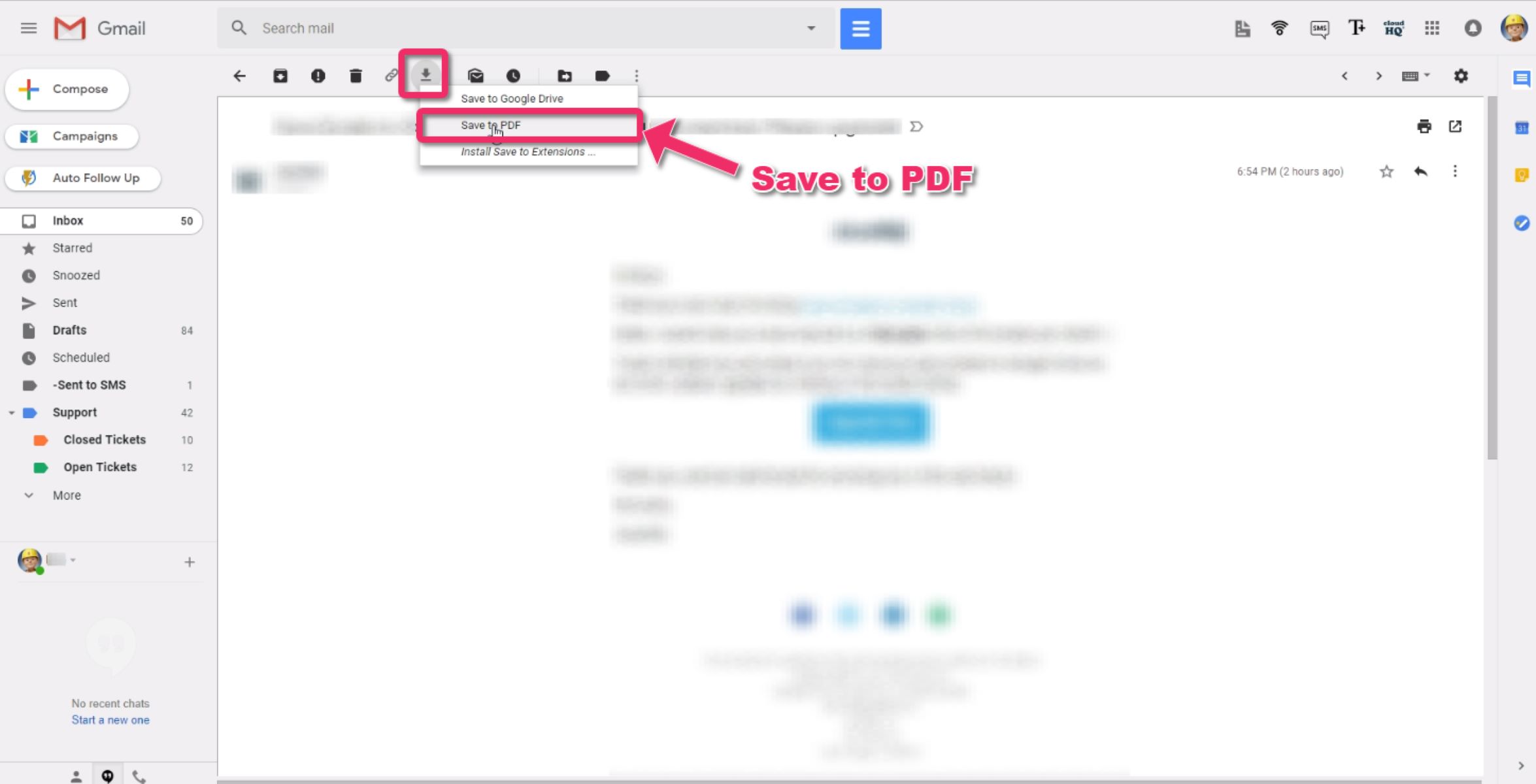Introduction
Welcome to our guide on how to email PDF files! In this digital age, sending documents via email has become the norm for effective communication. PDF (Portable Document Format) files are widely used for sharing documents as they preserve the formatting and ensure that the recipient sees the file exactly as you intended.
Whether you need to email a report to your boss, share a presentation with colleagues, or send important contracts to clients, knowing how to email PDF files properly is essential. This guide will walk you through the process, including converting files to PDF format, compressing them, attaching them to emails, and sending them securely.
As you read through this guide, you will learn why PDF files are preferred for emailing, as well as the different methods of converting and compressing them. We will also provide step-by-step instructions on how to attach and send PDF files through various email platforms. Additionally, we will share some valuable tips to ensure that your PDF files are sent and received without any issues.
So whether you are new to emailing PDF files or simply looking for ways to optimize your process, this guide has got you covered. Let’s dive in and discover the best practices for emailing PDF files!
Why Email PDF Files
Emailing PDF files offers numerous advantages that make it a preferred method of document sharing. Here are some reasons why you should consider using PDF files for email communication:
- Preserve Document Formatting: PDF files are designed to preserve the formatting of documents, ensuring that the recipient sees the content exactly as intended. This is particularly important for documents such as reports, presentations, and contracts, where maintaining the original layout is crucial.
- Cross-Platform Compatibility: PDF files can be opened and viewed on various operating systems, including Windows, Mac, and mobile devices. This ensures that your recipients can access and open the files regardless of the device they are using.
- Security and Protection: PDF files allow you to apply encryption and password protection, preventing unauthorized access or modifications. This is especially useful when sending sensitive or confidential information via email.
- Reduced File Size: PDF files can be compressed to reduce the overall file size without compromising the quality of the content. This makes it easier and faster to send PDF files over email, as it reduces both upload and download times.
- Text Searchable: PDF files can be generated with searchable text, making it easy for recipients to find specific information within the document. This is especially useful for large documents with numerous pages.
By utilizing PDF files for email communication, you can ensure that your documents are delivered with their original formatting intact, regardless of the recipient’s device or operating system. Additionally, the ability to apply security measures and compress file sizes adds an extra layer of protection and convenience to your document sharing process.
In the following sections, we will explore various methods for converting files to PDF format, compressing PDF files for email, as well as step-by-step instructions on how to attach and send PDF files through email. Let’s continue to learn more!
How to Convert Files to PDF
Converting files to PDF format is a straightforward process that can be done using different methods. Here are the most common ways to convert files to PDF:
- Using PDF Conversion Software: There are numerous software applications designed specifically for converting files to PDF format. These programs allow you to simply open your file and save it as a PDF. Adobe Acrobat, Nitro Pro, and Foxit PhantomPDF are popular options that provide advanced features and customization options.
- Using Online Conversion Tools: If you don’t have access to PDF conversion software, online conversion tools are a convenient alternative. Websites such as Smallpdf, PDF24, and Zamzar offer free online conversion services. Simply upload your file, select the desired output format (PDF), and wait for the conversion process to complete. Once converted, you can download the PDF file to your computer.
- Using Print-to-PDF Functionality: Most modern operating systems have built-in support for printing files to PDF. This functionality allows you to “print” your file to a virtual printer that generates a PDF file instead. To do this, open the desired file, go to the Print menu, and choose the PDF option. You can then customize the settings and save the file as a PDF.
- Using Microsoft Office Add-ins: If you frequently work with Microsoft Office documents, you can utilize add-ins to convert files to PDF directly from the application. Both Microsoft Word and PowerPoint have built-in options for saving files as PDFs. Simply go to the “Save As” menu and choose the PDF format.
Regardless of the method you choose, converting files to PDF format ensures that your documents maintain their original formatting and are easily accessible on various devices and operating systems. Once you have converted your file to PDF, you can proceed to compress it for efficient email transfer, which we will cover in the next section.
Now that you know how to convert files to PDF, let’s explore how to compress them for smoother emailing!
How to Compress PDF Files for Emailing
Compressing PDF files before sending them via email is crucial for a smoother transfer process, especially if your files are large in size. Fortunately, there are several methods you can use to compress PDF files effectively:
- Using PDF Compression Software: There are various PDF compression software programs available that can reduce the file size of your PDFs without sacrificing quality. These tools use algorithms to analyze and optimize the PDF, making them more space-efficient. Popular options include Adobe Acrobat Pro, PDF Compressor, and Smallpdf.
- Adjusting Image Compression: If your PDF contains images, you can reduce the file size by adjusting the image compression settings. Most PDF editors or compression tools allow you to adjust the quality or resolution of the images in your document. Lowering the image quality will result in a smaller file size, but keep in mind that it may impact the visual clarity of the images.
- Removing Unnecessary Elements: Another way to reduce PDF file size is to remove any unnecessary elements or objects. This includes removing hidden layers, deleting unused bookmarks or links, and eliminating redundant annotations. Use a PDF editor or optimization tool to remove these elements and streamline your PDF file.
- Cropping White Space: If your PDF has excessive white space or margins, consider cropping them to reduce the file size. PDF editors or compression tools usually have a cropping function that allows you to select and remove unnecessary white space. Be careful not to crop important content.
- Converting to Lower PDF Versions: PDF files have different versions, and newer versions tend to have larger file sizes due to additional features and improvements. Consider converting your PDF to a lower version (such as from PDF 2.0 to PDF 1.4) to reduce file size while maintaining compatibility and accessibility.
After compressing your PDF file, make sure to double-check the quality and readability of the document. It’s essential to strike a balance between reducing the file size and ensuring that the content remains clear and legible for the recipient.
Now that you know how to compress PDF files, let’s move on to the next steps: attaching PDF files to an email and sending them securely.
How to Attach PDF Files to an Email
Attaching PDF files to an email is a straightforward process. Here’s a step-by-step guide on how to do it:
- Open your Email Application: Launch your preferred email application or log in to your email service provider’s website.
- Create a New Email: Click on the “Compose” or “New Email” button to start writing a new email.
- Enter Recipient Details: Enter the recipient’s email address in the “To” field. You can also add a subject line and any necessary text in the body of the email.
- Click on the Attachment Button: Look for the attachment button or icon (usually represented by a paperclip symbol). Click on it to open the file selection dialog box.
- Select the PDF File: Navigate through your computer’s files and folders to locate the PDF file you want to attach. Select the file and click “Open” or “Attach” to add it to your email.
- Verify the Attachment: Ensure that the PDF file is properly attached by checking for its name or thumbnail icon in the email composition window.
- Add Additional Attachments (if needed): Repeat steps 4-6 to attach more PDF files or any other necessary attachments to the same email.
- Review the Email: Before sending the email, double-check the recipient’s email address, subject line, body text, and attached PDF files to ensure accuracy.
- Send the Email: Once you’re satisfied with the email content, click the “Send” button to transmit the email with the attached PDF files.
It’s important to note that the attachment size limit will vary depending on your email service provider. If your PDF file exceeds the limit, you may need to compress it further or consider using a file-sharing service instead.
Now that you’ve successfully attached the PDF files to your email, let’s move on to the final step: sending the PDF files through email.
How to Send PDF Files through Email
Sending PDF files through email is a simple and efficient way to share documents. Here’s a step-by-step guide on how to send PDF files through email:
- Compose and Attach: Start by composing a new email and attaching the desired PDF file(s) using the method described in the previous section.
- Review the Email Content: Double-check the email’s subject line, recipient(s), body text, and attached PDF files to ensure accuracy and completeness.
- Add a Personalized Message: Consider adding a personalized message in the email body to provide context or instructions regarding the attached PDF files.
- Verify File Compatibility: Ensure that the recipient has the necessary software or applications to open and view PDF files. If in doubt, you can include instructions or suggest alternative applications for viewing PDF files.
- Consider File Size: Take into account the file size of the attached PDF file(s) and the email service provider’s attachment size limit. Ensure that the file size is within the allowed limit, or compress the PDF further if necessary.
- Send a Test Email: If possible, send a test email to yourself or a trusted colleague to confirm that the attached PDF file(s) can be successfully received and opened on different devices and email clients.
- Click “Send”: Once you’ve reviewed and confirmed all the necessary details, click the “Send” button to transmit the email and its attached PDF file(s) to the recipient(s).
- Track and Follow Up (if needed): Keep a record of the sent email and follow up with the recipient(s) as necessary to ensure they have received and accessed the attached PDF file(s) successfully.
Remember, always exercise caution when sending sensitive or confidential information via email. Consider using encryption or password protection features if your email service provider offers them, or explore secure file-sharing options for extra security.
By following these steps, you can easily send PDF files through email, ensuring that your recipient(s) receive and access the documents efficiently.
Next, we will provide some valuable tips for emailing PDF files to enhance your email communication process.
Tips for Emailing PDF Files
Efficiently emailing PDF files can greatly enhance your document sharing experience. Here are some valuable tips to keep in mind when emailing PDF files:
- Organize Your Files: Before attaching PDF files to an email, ensure they are properly organized and named. This helps both you and the recipient easily identify and locate the relevant files.
- Use Descriptive Subject Lines: When composing the email, use concise and descriptive subject lines that accurately reflect the content of the attached PDF files. This enables the recipient to understand the email’s purpose at a glance.
- Provide Clear Instructions: Include clear instructions in the email body regarding the attached PDF files, such as any specific actions the recipient needs to take or important details they should be aware of.
- Compress Large PDF Files: Compress large PDF files to reduce their size and minimize upload and download times. This ensures that the email can be sent and received more efficiently.
- Consider File Format Compatibility: If you know the recipient prefers a different file format, consider converting the PDF to that format before sending, or provide alternative formats alongside the PDF for their convenience.
- Double-Check Recipient Details: Before clicking “Send,” verify the recipient’s email address to prevent mistakenly sending the PDF files to the wrong person.
- Follow Email Etiquette: Adhere to proper email etiquette by using a professional tone, ensuring correct grammar, spelling, and punctuation, and staying mindful of recipients’ time by keeping emails concise.
- Consider File Sharing Services: For particularly large PDF files or scenarios where recipient restrictions on file size exist, consider using cloud storage or file-sharing services, such as Dropbox or Google Drive, and provide the recipient with a download link in the email.
- Confirm Successful Delivery: After sending the email, consider following up with the recipient to ensure they received the email and were able to download and open the attached PDF files successfully.
- Secure Sensitive Information: If you are sending confidential or sensitive information, consider using encryption or password-protect the PDF files. Share the passwords or decryption instructions separately using a different communication medium.
By implementing these tips, you can optimize your email communication when sending PDF files, ensuring a seamless and effective exchange of information.
Now that you have a comprehensive understanding of emailing PDF files and the best practices to follow, you can confidently share your documents with others while preserving their integrity and accessibility.
Conclusion
In this guide, we have covered the essential steps for effectively emailing PDF files. We discussed the advantages of using PDF files for email communication, including the preservation of document formatting, cross-platform compatibility, security features, reduced file size, and text searchability.
You learned how to convert files to PDF format using PDF conversion software, online tools, print-to-PDF functionality, or Microsoft Office add-ins. We also explored methods for compressing PDF files, such as using compression software, adjusting image compression, removing unnecessary elements, cropping white space, and converting to lower PDF versions.
Furthermore, we provided a step-by-step guide on how to attach PDF files to an email, including selecting the file, verifying compatibility, and reviewing the email content. We also discussed the importance of ensuring file size compliance and sending a test email to confirm successful transmission.
Additionally, we shared valuable tips, including organizing your files, using descriptive subject lines, providing clear instructions, following email etiquette, and using file-sharing services for large files. We emphasized the importance of double-checking recipient details, securing sensitive information, and confirming successful delivery.
By following these guidelines, you can streamline your email communication process and ensure that your PDF files are shared efficiently, preserving their quality and accessibility for the recipients.
Now that you have a comprehensive understanding of how to email PDF files, it’s time to put this knowledge into practice. Start converting, compressing, and attaching your PDF files to emails, and enjoy the seamless sharing of documents with others.
Thank you for reading our guide, and we hope it has been helpful in optimizing your email communication with PDF files!







